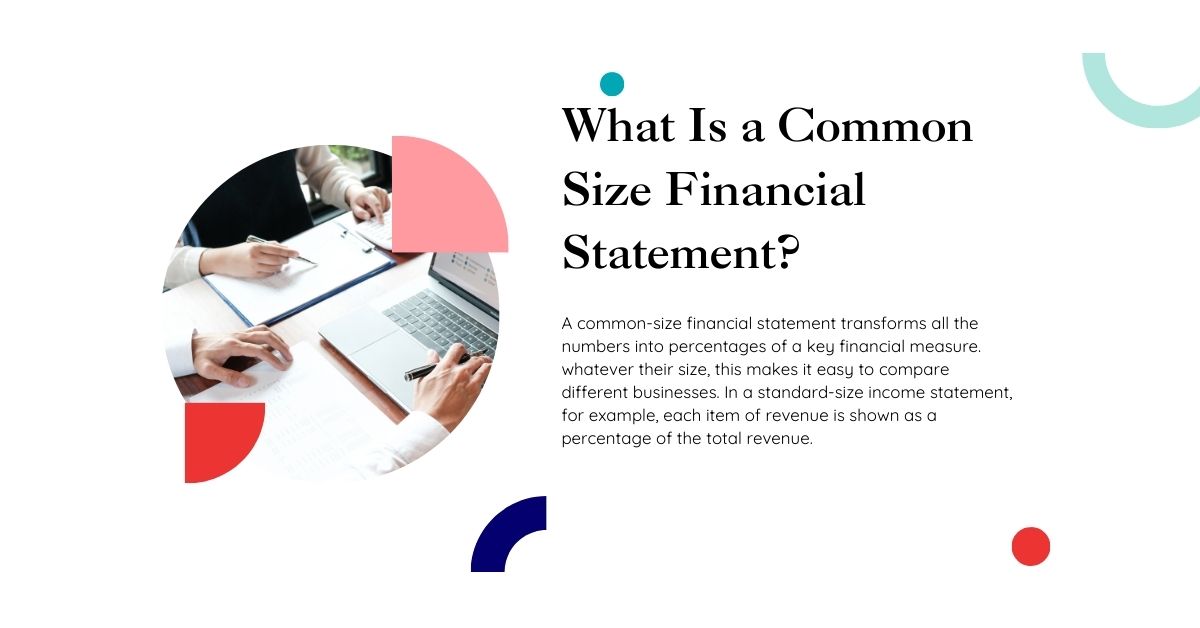When companies or organizations make financial statements, they can see how the business is doing at that given point in time. What makes financial records important for a business or organization is how they are interpreted and analyzed.
For different people in an organization, financial records are important in different ways. For a boss, it would be how well the business is run, and for a shareholder, it would be how much money the business makes.
What Is a Common Size Financial Statement?

A common-size financial statement transforms all the numbers into percentages of a key financial measure. whatever their size, this makes it easy to compare different businesses. In a standard-size income statement, for example, each item of revenue is shown as a percentage of the total revenue.
This helps you see how much of a business’s income goes to costs of goods sold, running costs, and other costs, and how much is left over as profit. In the same way, all of an organization’s assets and debts are shown on a standard size balance sheet as a percentage of its total assets. This helps figure out how important different assets and debts are to the company’s overall financial health.
Types of Common Size Statements
There are two primary types of common size financial statements:
Vertical Common Size
This form of financial statement represents each item as a percentage of a specific base item within the same statement. For example, in a vertical common size income statement, all revenue and expense elements are represented as a percentage of the total revenue. In a vertical common size balance sheet, all assets and liabilities are represented as a percentage of the total assets.
Horizontal Common Size
This form of analysis compares the dollar value of each item on a financial statement to the dollar value of the same item in a previous period. For example, in a horizontal common-size income statement, each revenue and expense item is represented as a percentage of the same item in the previous year. In a horizontal common size balance sheet, each asset and liability is represented as a percentage of the same item in the previous year.
You can use both types of standard-size statements to look at financial trends and compare how well different companies are doing.
Want to read more? Check out these articles:
- What is Free Cash Flow? A Clear and Concise Definition
- What Is Dividend Yield? A Beginner’s Guide To Earning Passive Income
Importance of Common Size Statement
The financial performance and position of various companies can be compared in a standardized manner through the use of common size financial statements, which are important instruments for financial analysis. Common size statements eliminate the influence of size differences and enable more meaningful comparisons by expressing all items as a percentage of a key metric.
This is especially beneficial for creditors, analysts, and investors who require an assessment of the financial health and relative strength of various organizations. Common size statements can be utilized to evaluate the financial health of a company, identify areas of strength and vulnerability, and identify trends.

